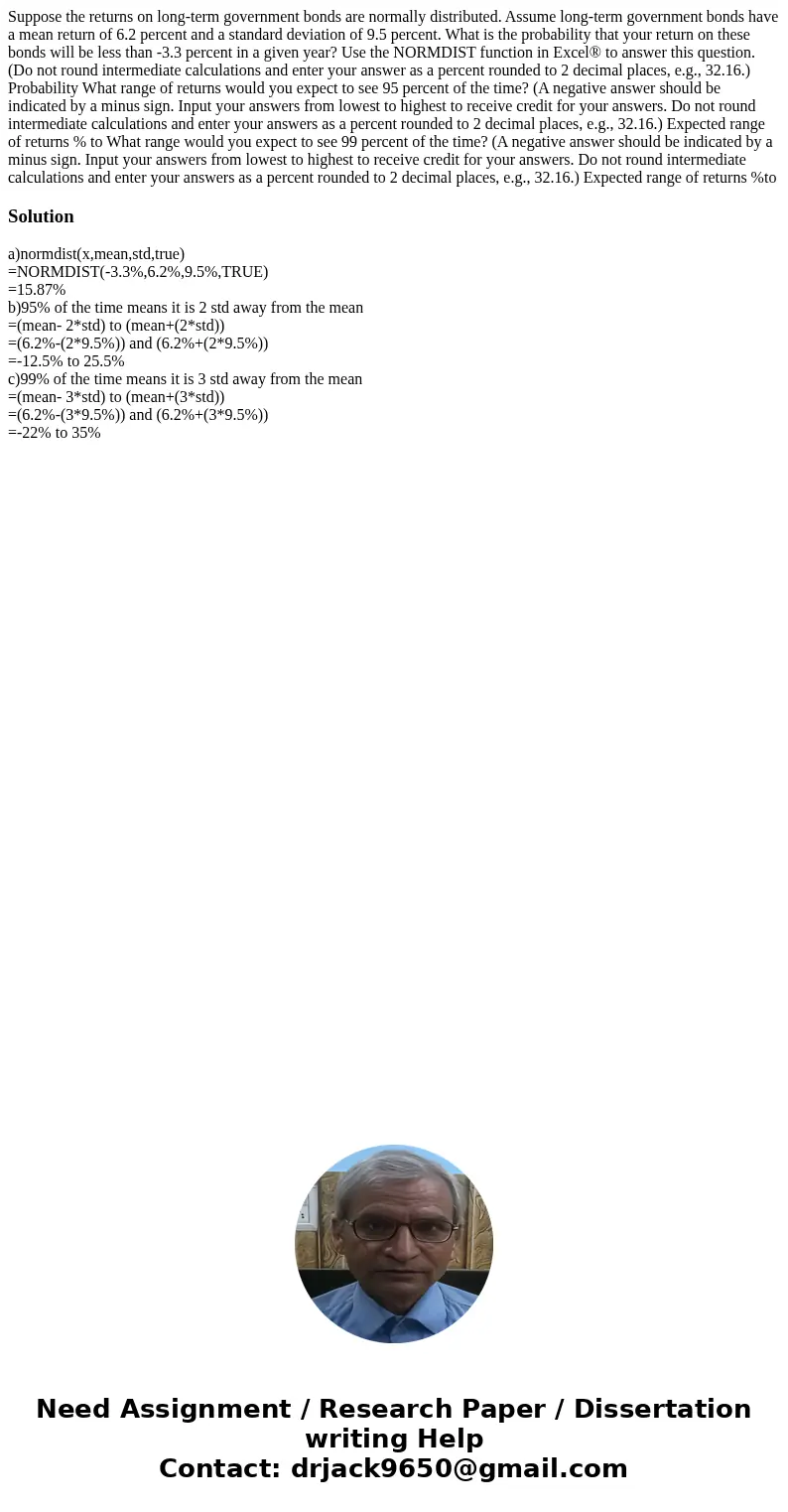Suppose the returns on longterm government bonds are normall
Suppose the returns on long-term government bonds are normally distributed. Assume long-term government bonds have a mean return of 6.2 percent and a standard deviation of 9.5 percent. What is the probability that your return on these bonds will be less than -3.3 percent in a given year? Use the NORMDIST function in Excel® to answer this question. (Do not round intermediate calculations and enter your answer as a percent rounded to 2 decimal places, e.g., 32.16.) Probability What range of returns would you expect to see 95 percent of the time? (A negative answer should be indicated by a minus sign. Input your answers from lowest to highest to receive credit for your answers. Do not round intermediate calculations and enter your answers as a percent rounded to 2 decimal places, e.g., 32.16.) Expected range of returns % to What range would you expect to see 99 percent of the time? (A negative answer should be indicated by a minus sign. Input your answers from lowest to highest to receive credit for your answers. Do not round intermediate calculations and enter your answers as a percent rounded to 2 decimal places, e.g., 32.16.) Expected range of returns %to 
Solution
a)normdist(x,mean,std,true)
=NORMDIST(-3.3%,6.2%,9.5%,TRUE)
=15.87%
b)95% of the time means it is 2 std away from the mean
=(mean- 2*std) to (mean+(2*std))
=(6.2%-(2*9.5%)) and (6.2%+(2*9.5%))
=-12.5% to 25.5%
c)99% of the time means it is 3 std away from the mean
=(mean- 3*std) to (mean+(3*std))
=(6.2%-(3*9.5%)) and (6.2%+(3*9.5%))
=-22% to 35%

 Homework Sourse
Homework Sourse